3daysofdesign Copenhagen 2025: The smow Highlights
...Whether at Vitra, Hem Frama, or &Tradition – the patterns gave minimalism a subtle, skillful break...
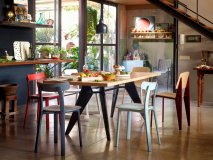

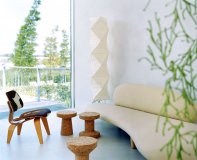

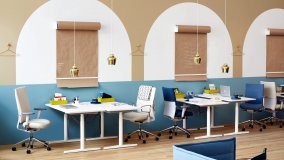



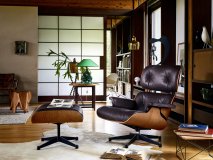
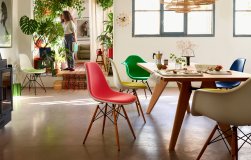


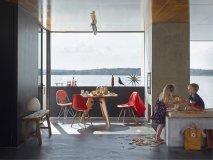
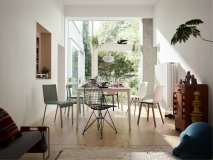


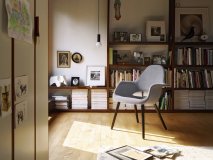
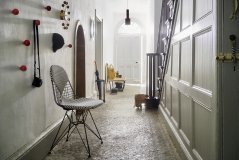




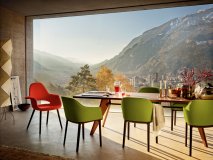
Not found what you were looking for?
We can deliver all products from this manufacturer. Please contact us at +49 341 22228822
or service@smow.com to discuss your specific product request.

The Vitra story begins in the 1950s, specifically in 1953 when, during a trip to the USA, the founders of Vitra, Willi and Erika Fehlbaum, discovered an Eames Chair and were so impressed that they set about acquiring the license for the furniture from Charles & Ray Eames in Europe. A few years, and lots of negotiations later Vitra finally acquired the license in 1957 from the renowned US furniture manufacturer Herman Miller: and not only the European rights for the furniture of Charles & Ray Eames, but also for furniture by George Nelson, Alexander Girard and Isamu Noguchi. Licenses that laid the foundations for Vitra's success. A second milestone on the Vitra path was the cooperation with the Danish designer Verner Panton when Willi Fehlbaum dared to produce his novel plastic cantilever chair. After various prototypes and false starts the so-called Panton Chair was launched on the market in 1967: the first plastic cantilever chair made from a single cast, and the first product developed by Vitra. This positive experience encouraged Vitra to enter into further collaborations. Since then, the company has worked with a wide range of designers in Weil am Rhein, including Jasper Morrison, Mario Bellini and Antonio Citterio. In 1977 Rolf Fehlbaum took over the management of the company and alongside continuing the tradition of quality and innovation also founded the Vitra Design Museum, an exhibition space not only for Vitra products but for designer furniture classics. Today, more than 60 years after that fateful day in 1953, Vitra is one of the most influential and important manufacturers of designer furniture.
Over the past 60 years Vitra has cooperated with countless influential furniture designers to develop groundbreaking designer furniture. A brief overview of some of the key Vitra designers:
In essence the Vitra story starts with Charles and Ray Eames and the two icons of 20th century American design remain one of the cornerstones of both the Vitra portfolio and philosophy. Classics such as the Eames Lounge Chair, the Eames DSR Plastic Chair or the Aluminium Chair range have not only stood the test of time but continue to inspire young designers. In addition to providing Vitra with some of their most endearing articles, Charles Eames also helped form the Vitra philosophy which sees designers as "authors". For Eames the recognition of need is the raison d'être of design and he was opposed to extravagance without purpose; the designer should concentrate on solving the problem, albeit in their own way and with their own creativity.
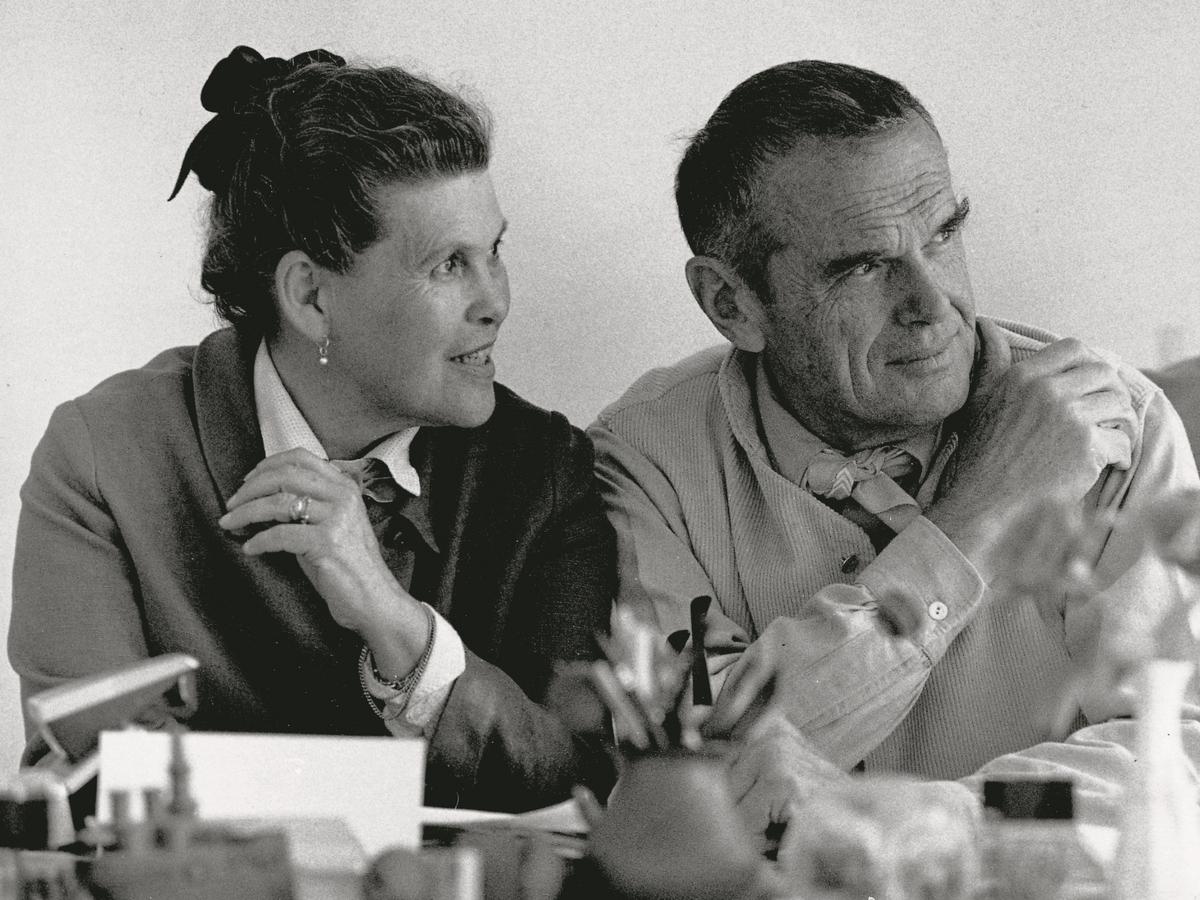
Ray and Charles Eames
The American star architect and Vitra first worked together in 1987 when Gehry used the Vitra Editions program to design his cardboard "Little Beaver" chair. It is, however, his buildings that bond Gehry most to Vitra. In the late 1980s he was responsible for the Vitra Design Museum as well as production halls and a canteen in the same complex. Gehrys 1994 extension to the Vitra HQ in Basel is one of the most instantly recognized buildings in modern architecture.
The Dutch architect and designer initially established himself as a small scale furniture producer and interior designer. In 1996 Van Severen's first collaboration with Vitra resulted in the chair .03, and over the subsequent years until his untimely death in 2005 Van Severen and Vitra worked closely on a range of products including the .04, .07 and the Kast shelving unit.
The grand old man of Danish design was the first designer to work with Vitra on the development of a new product - the Panton Chair. Following his studies at the Copenhagen art school, Panton worked briefly in Arne Jacobsen's studio before setting up on his own. Following a range of highly successful design, architecture and interior design projects he met Willi Fehlbaum, and the rest is history...
In 2000 Rolf Fehlbaum approached the, then still relatively unknown, French design team of Ronan and Erwan Bouroullec and invited them to design an office system for Vitra - the first office system the brothers had created. The result "Joyn" was premiered in 2002. Since then the Bouroullecs have not only gone on to become acclaimed and sought after designers, but they have also created some of Vitra's most commercially successful products including the Algue room divider system and the Belleville Chair Wood multi-purpose chair.
The former design director at Herman Miller "arrived" at Vitra in 1957 courtesy of the licensing agreement between Vitra and Herman Miller; however, despite the somewhat involuntary route Nelson was to prove one of the closest mentors for Rolf Fehlbaum and in many ways helped shape Fehlbaum's philosophy and understanding of "design" in Vitra's formative years. As a designer Nelson was just as influential and designs such as the marshmallow sofa or Coconut Chair are in many ways the first steps towards pop art.

Vitra Designer George Nelson
Original Vitra furniture meets the highest quality standards, is stable in value and can be passed on from generation to generation. But what exactly does original mean? Aren't the Eames originals from the 1940s in the MoMA or the Center Pompidou? Isn't every reproduction a copy? In the fine arts the terms original and forgery are common, in the field of design they require explanation. With regard to the design furniture industry, only those manufacturers who have the appropriate licenses are authorized to produce certain products. If this legal basis does not exist, it is plagiarism, a copy, a stolen idea. What does that mean specifically in relation to Vitra furniture? The Fehlbaum family, founders of Vitra, maintained a close friendly relationship with Charles and Ray Eames. And to this day, as the legal license holder, the company has endeavoured to preserve and further develop their cultural heritage together with the descendants of the Eames. An original can therefore be designated as such if the legal and ideal requirements are met: The original comes from Vitra. The argument that only first-produced drafts are originals is misleading and is often used by plagiarists. Each design is aimed at solving a specific problem and the initial drafts offer an initial approach, which in practice sometimes proves to be in need of improvement. Ray and Charles Eames worked their entire lives on the further development of their products, experimented with new materials or exchanged gliders because they found a better solution. Since reproduction is part of the concept in the design logic, Vitra chairs manufactured today are just as original as the valuable vintage objects and mid-century collectibles.
Highest quality standards enable Vitra to grant an extended manufacturer's warranty of 10 to 30 years on selected design classics. Register your Vitra furniture today and benefit from generous guarantee advantages. All information as well as questions and answers about the Vitra manufacturer's warranty can be found here or directly on the Vitra website.
Please click on the picture for detailed information (ca. 0,2 MB).
The Vitra Design Museum originated from a wish from Vitra Chairman Rolf Fehlbaum to create a location in which to document the history of Vitra. In 1987 Fehlbaum commissioned US Architect Frank Gehry to design a building for the collection; Gehrys first building in Europe.
Der Wunsch Rolf Fehlbaums, die Geschichte von Vitra an einem geeigneten Ort zu dokumentieren, legte den Grundstein für das Vitra Design Museum. 1987 beauftragte Fehlbaum den amerikanischen Architekten Frank Gehry mit dem Entwurf eines Gebäudes für seine Sammlung. Das Museum (Gehrys erstes Gebäude in Europa) wurde am 3. November 1989 eröffnet.

Das Vitra Design Museum, designed by Frank Gehry
The museum opened on November the 3rd 1989 and although the initial attention was won by Gehrys structure, it wasn't long before the contents of the museum took centre stage and a series of award winning exhibitions were being staged. Over the years the Design Museum has grown from a single building to a complex on the edge of the German town of Weil am Rhein. In addition to the Gehry building the Design Museum complex includes buildings designed by designers such as Jasper Morrison, Zaha Hadid, Tadao Ando and Jean Prouvé.
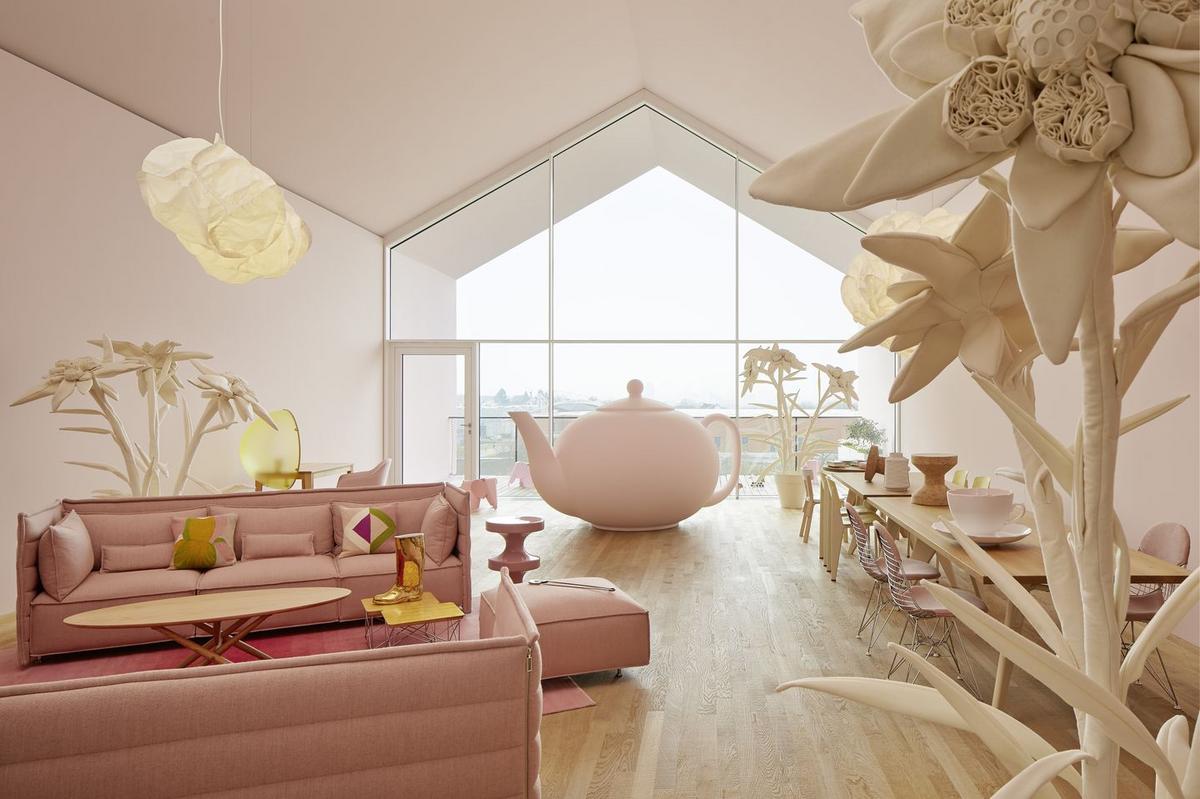
The VitraHaus is home to regularly changing exhibitions
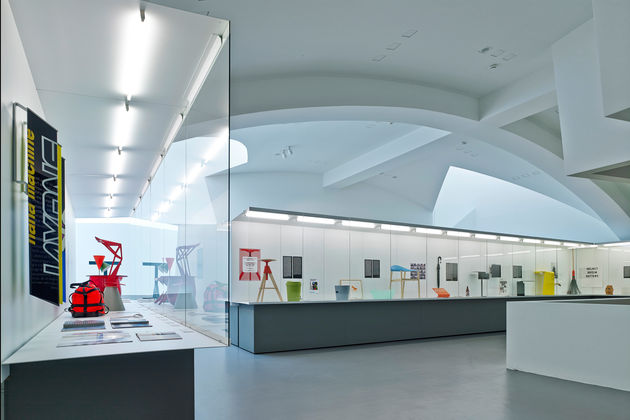
Konstantin Grcic. Panorama - a Vitra Design Museum exhibition
The VitraHaus is the latest addition to the Vitra Campus in Weil am Rhein. Designed for Vitra by Swiss architects Herzog and de Meuron the VitraHaus is principally intended as an exhibition area for the Vitra Home Collection.

VitraHaus with Alcove Sofas by Ronan und Erwan Bouroullec
Vistors to the spectacular building can, however, not only admire the collection but also request either more information on individual products or a concrete offer from specially selected Vitra specialist dealers. smow is one of these specialist Vitra VitraHaus partners.
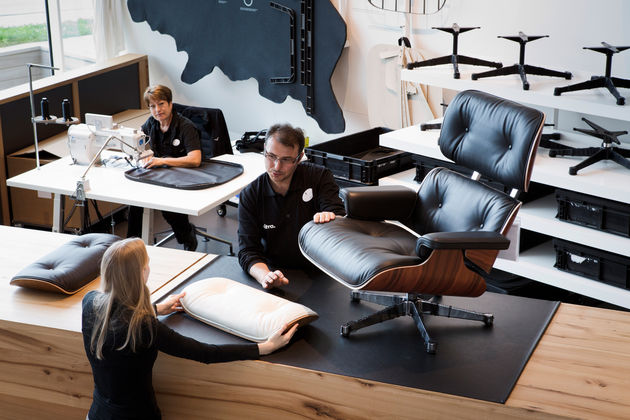
In the Lounge Chair Atelier on the Vitra Campus you can follow the final assembly of the Eames Lounge Chair

For Vitra sustainability at runs through all sections of the company and reflects its attitude
For Vitra, sustainability is not just a project or corporate goal, sustainability characterises an attitude for the brand and across all areas of the company. Vitra embodies sustainability at every level and reflects this trait, whether in dealing with employees, in the interaction of the different nationalities in the company, in the support of childcare through its own Vitra kindergarten, in the origin of the production materials, that it powers its buildings with hydropower - to name just a few examples. Vitra not only lays down corporate social responsibility, which it defines as “Vitra Policy”, a code of conduct, but lives it.
Competition law, occupational safety and data protection are just a few cornerstones of the consistent action of the interior manufacturer, who set the same standards for partners and suppliers as the basis for a trusting cooperation along the supply and value chains; and always keeping the entire life cycle in mind, whereby an important consideration is the recyclability of a product.
Vitra relies on durability in all of its products, including the materials used. Vitra's integrated approach was expanded as early as the mid-eighties, investments were made in renewable energies and energy consumption was generally reduced. The aluminium used in Vitra products is 90% recycled, leather and cork are sourced from like-minded European partners.
Since 2020 Vitra have produced the Vitra Tip Ton RE, a version of the 2011 Tip Ton, in 100% recycled plastic. Until the end of 2023, it was the only Vitra product made from 100% recycled plastic. At the beginning of 2024, the Eames Plastic Chairs RE were added, which are made exclusively from materials collected from German household recycling bins.
Metals are powder-coated, woods are varnished without solvents. For Vitra, the recycling material plastic is probably the most innovative material used, which is also durable, hygienic and inexpensive. In addition, Vitra uses ecological and health certified materials. Vitra products have been awarded the Blue Angel, the GS mark, the EcoVadis and Greenguard Gold Label. Vitra's sustainable product cycle is one of the most important basis for creating new designs and products.
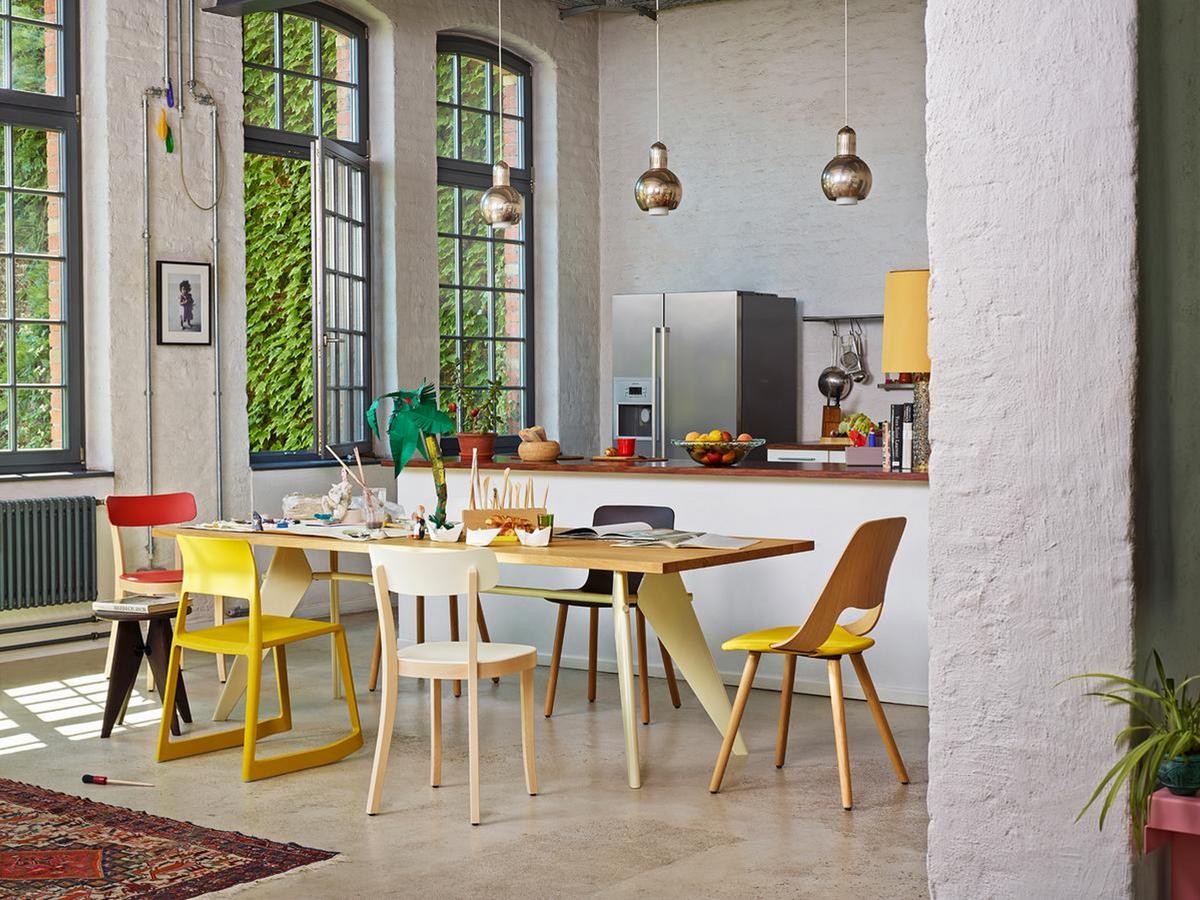
Sustainable furnishings from Vitra: colorful and durable
In recent years Vitra has increasingly focused on the use of recycled materials, a focus arising from an understanding of waste as a valuable raw material that can be employed meaningfully in the production cycle. A philosophy embodied in the Eames Plastic Chairs RE, which not only pay homage to the heritage of design, but also make a significant contribution to reducing environmental impact.
The novel recycled material for the Eames Plastic Chair originates in German households and is collected via the “Yellow Bag” packaging recycling system. Compared to conventional primary plastics based on crude oil this recycled material produces fewer climate-damaging emissions and significantly reduces the consumption of primary energy. The seat shells can also be fully recycled at the end of their use, thereby further supporting the cycle of materials and reducing the environmental impact.
Due to the composition of the recycled material the lighter colour variants of the Eames Plastic Chairs RE can contain fine pigment dots, a natural component of the materials sustainable source and which even close up are indistinguishable with the naked eye. With the darker colours there is no difference between the original and the recycled material. The new chairs can be recognized by their name EPC RE. The colours “Green”, “Sunlight” and “White” are now “Emerald”, “Citron” and “Cotton white”. All other EPC colour names remain the same.
With the Eames Plastic Chairs RE Vitra not only sets an example for the use of recycled materials in furniture design, but also for the integration of sustainability into aesthetic design, and in doing so create a motivation for properly recycling your household waste. It could end up as a chair that is not only a functional piece of furniture, but also a symbol of a responsible and future-oriented design philosophy.

New green color variant made from recycled plastic: Vitra DSX RE Chair in emerald green
Want to learn more about the new Eames Plastic Chairs RE? In the Vitra brochure you will find all the details. Simply Download and explore!
All Vitra products are designed and produced to advance a long service life. Vitra does not follow short-term trends and deliberately avoids unnecessary details: an attitude and sustainability strategy very much at the heart of the Vitra Circle Stores concept, which, following the success of the pilot store in Brussels, now also includes a store in Frankfurt.
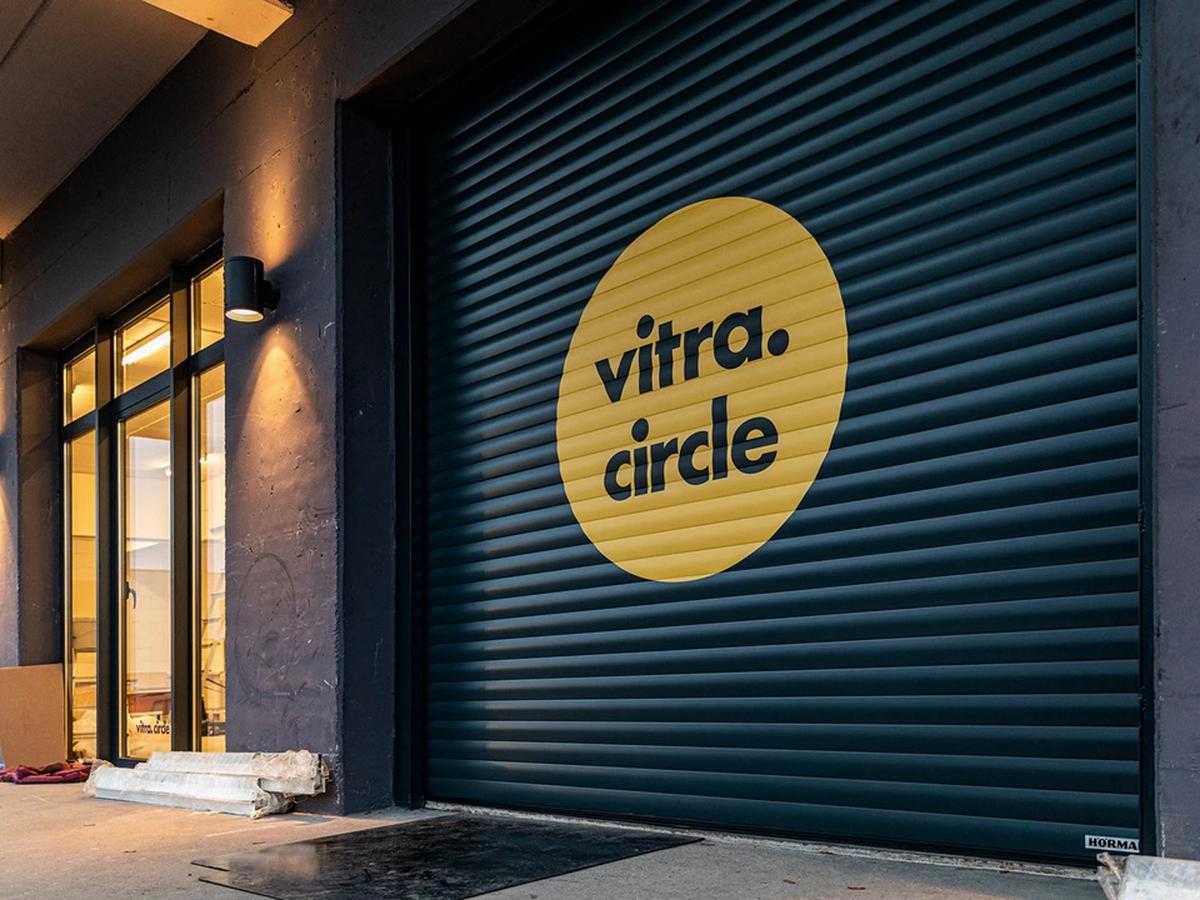
Vitra Circle Store Frankfurt
What is the Vitra Circle Store?
Vitra has a focus on easy recycling and a long service life for its products. It is precisely this sustainability cycle that is also reflected in the so-called Circle Stores, where used Vitra furniture and accessories including samples, trade fair and exhibition items are sold. The sales prices are based on the condition of the respective Vitra products.
More on Vitra's attitude in the company's 2021 Sustainability Report (PDF to Download).
The world as it existed when Vitra acquired the rights to Eames, Nelson et al was a clearly defined world where work and home life rarely encroached on one another. Over the decades the borders have become blurred and today homes must offer their owners more than merely a sofa and bed. As a response to this shift in emphasis Vitra initiated their Home Program based on the concept of the collage. Rolf Fehlbaum, guiding light of Vitra Home, first experienced the collage concept at Charles and Ray Eames house in Pacific Palisades where furniture, objects, art and plants fused in such a way that each object became more personal, familiar and intimate. This collage, however, is no patchwork, nor a random collection rather it is an arrangement based on an individual system of coordination based on the personality and requirements of each user. Vitra supplys the elements but it is up to each individual to decide what is right for them. And so we are all free to mix any Vitra chair with any accessory, such as a Panton chair with a George Nelson home desk, a Park Sofa, Hella Jongerius cushions and an Eames segmented table - or not. Just as you wish.
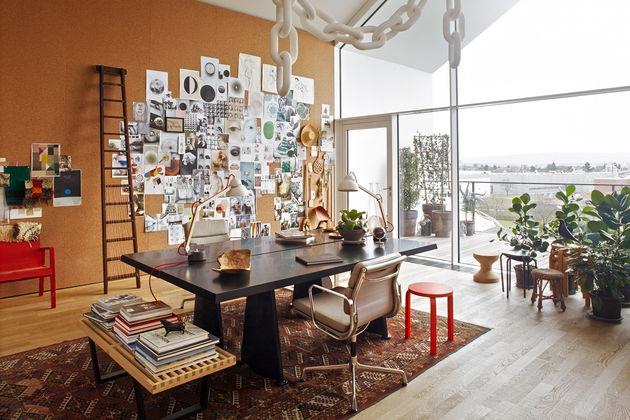
Vitra Home Collection
Much like the haute couture of the French fashion world, Vitra editions is a "laboratory" where selected designers can create designer furniture articles without having to pay heed to the potential commercial success of the project. Although the products created in the Vitra Editions are produced in small quantities the principle aim is to give the designers the freedom to experiment with material, form and production processes and so help stretch the boundaries of what is possible. Started in 1987 with Ron Arad, Vitra Editions has allowed designers such as Fernando & Humberto Campana, Konstantin Grcic or Naoto Fukasawa to experiment and learn.
In one of his last major decisions before standing down, Willi Fehlbaum decided to take Vitra into the production of office furniture. The program Vitra Office started at the 1976 Orgatec furniture trade fair in Cologne with the chair "Vitramat" by the Berlin based designer Wolfgang Deisig. Three years later Vitra started working with Mario Bellini who not only brought a little Italian design je ne sais quoi to Vitra but started the expansion of the Vitra office chair range. This baton of innovative, Italian office furniture design was taken up in subsequent decades by first Antonio Citterio and Alberto Meda through office chairs such as the Axess plus, MedaPal and MedaPro. Mario Bellini further added to the canon in 2005 with his Headline chairs designed together with his son Claudio. In addition to office chairs Vitra have also worked with designers such as Antonio Citterio or Jasper Morrison to produce office systems such as the Ad Hoc or the ATM. Just as the Vitra Home program has responded to cultural and social changes, so too has the Vitra office program evolved over the decades. In 1993 the Vitra Design Museum presented the exhibition "Citizen Office" which presented modern office design concepts based on the thesis that an office is not just a place of work, but much more is a living space where various processes and interactions occur. Ten years later Vitra updated the Citizen Office to Network Office, under the motto "Break down the walls" and based around the Joyn system from Ronan and Erwan Bouroullec. In 2008 the further development of the Network Office concept Net'n'Nest was presented at Orgatec - the very place where Vitra first entered the office furniture market some 32 years previous. However, just as with their Home program Vitra place the emphasis in their Office program on the individual choosing those elements that best suit their personality, requirements and for all their working style.
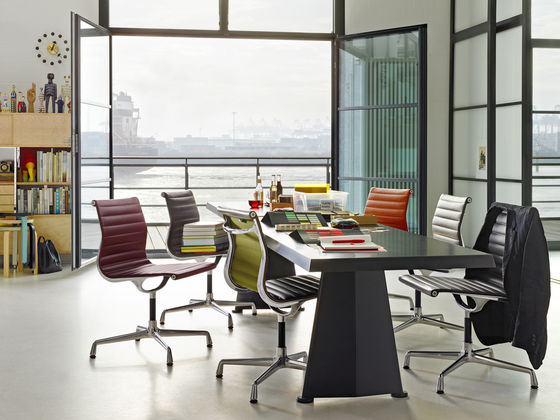
Vitra office with Eames Alu Chairs
Click the images below for inspiration from the Vitra broschures.
...Whether at Vitra, Hem Frama, or &Tradition – the patterns gave minimalism a subtle, skillful break...
...1 The exhibition Tsuyoshi Tane: The Garden House in the Vitra Design Museum Gallery, and the eponymous Garden House by Tsuyoshi Tane, the latest addition to the Vitra Campus in Weil am Rhein, allow one to approach not only a better appreciation of Tane's positions but also to experience how they influence and inform his approach, his works, his architecture... For all that Vitra is popularly associated with Weil am Rhein, Germany, the company's origins are to be found just across the border in Switzerland, specifically in Birsfelden on the edge of Basel, the association with Weil am Rhein being first forged in the early 1950s, a period when Vitra was still, primarily, a shop-fitting company, if one taking its first, tentative, steps into domestic interiors alongside retail interiors...
..." The morning of Friday September 27th 2013 was one of those misty autumn occasions that cause SANAA's immense new Vitra Factory Building in Weil am Rhein to merge, almost unseen, with the grey background... And so it was perhaps fitting that the Vitra Design Museum choose this dank September morn to open their latest exhibition, "Lightopia", an exhibition devoted to light...
August 20th marks the 100th anniversary of the birth of Finnish architect/designer Eero Saarinen. Eero Saarinen had - in all probability - very little career choice other than that of architect: Not only was his father Eliel Saarinen one of Finland's most...